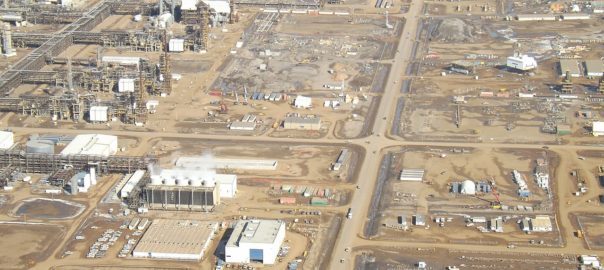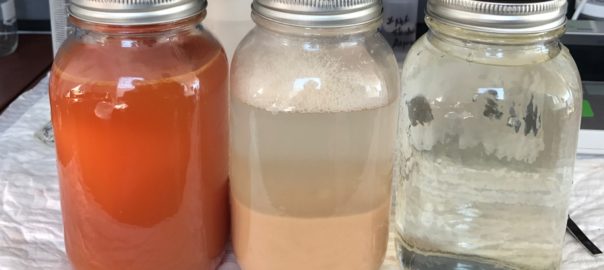The Government of Canada has announced C$72.3 million ($54.4 million) in funding for three clean technology projects in Alberta’s oil and gas sector.
The recipients, Canadian Natural Resources Ltd and Titanium Corp, are working on an in-pit extraction process that separates oil sands ore into solids, bitumen and water; new steam turbine generator technology to help produce power for its facilities; and a technology designed to remediate oil sands tailings.
Canada’s Minister of Natural Resources, Amarjeet Sohi, said: “These projects provide Alberta’s oil and gas sector with solutions that will help reduce pollution, drive clean innovation and create good jobs.
“Accelerating clean technology development is a key component of our government’s approach to promoting sustainable economic growth as Canada moves toward a low-carbon economy.”
As part of the funding, which will reportedly leverage more than C$415 million in investments, Canada Natural will receive C$5 million from the Clean Growth Program (CGP) to further develop an in-pit extraction process that separates oil sands ore into solids, bitumen and water at its Horizon oil sands mine site. This will reduce the number of diesel trucks and the amount of power needed, according to the government. At the same time as this, Emissions Reduction Alberta is investing C$5.6 million to support this project through its Oil Sands Innovation Challenge.
Canadian Natural will also receive C$22.3 million from the Low Carbon Economy Fund (LCEF) for a new steam turbine generator technology for power production at its Athabasca oil sands project (AOSP) facility. This new technology is expected to reduce emissions. The AOSP is owned by Canadian Natural, Chevron Canada Ltd and Shell Canada Ltd.
Titanium Corp, meanwhile, will receive a total of C$45 million from the CGP and LCEF for a technology designed to remediate oil sands tailings at Canadian Natural’s Horizon oil sands site. “The project has the potential to create a new high-value minerals industry for Western Canada by facilitating the recovery of valuable minerals (zircon and titanium-bearing minerals) from oil sands tailings,” the government said. An additional C$10 million has been committed by Emissions Reduction Alberta to further support this project, it added.
Tim McKay, President of Canadian Natural Resources, said: “Canadian Natural, and Canada’s oil and natural gas sector, recognise the need to reduce greenhouse gas (GHG) emission intensities and we have been able to leverage technology and Canadian ingenuity to deliver significant results. In fact, Canadian Natural’s Horizon oil sands operations has reduced our GHG intensity by 31% from 2012 to 2017. At today’s production levels, that’s equivalent to taking 665,000 cars off the road.
“Canada’s oil and natural gas should be considered a premium product and have a major role for decades to come in providing responsibly produced, low GHG-intensity oil and natural gas to growing economies while reducing overall global GHG emissions.”
Scott Nelson, President and Chief Executive Officer, Titanium Corporation, said: “This significant funding commitment from the Government of Canada is a critical step in advancing the first implementation of our Creating Value from Waste™ clean technology. Government and industry support and collaboration has been invaluable in moving our project forward and developing this made-in-Canada solution for the benefit of all stakeholders.”
The Creating Value from Waste project at Canadian Natural’s Horizon oil sands site includes a design for a commercial scale plant that entails building a new facility next to existing bitumen froth treatment plants and applying a secondary stage of treatment before the waste from froth treatment enters the tailings pond. The Creating Value from Waste tailings remediation technologies are designed to reduce the environmental footprint of tailings ponds by recovering valuable bitumen, solvents and minerals, resulting in a cleaner tailings stream.
Natural Resources Canada’s CGP is a C$155-million investment fund that helps to advance emerging clean technologies toward commercial readiness so natural resource operations can further reduce their impacts on air, land, and water, while enhancing competitiveness and creating jobs.
The LCEF is divided into two parts:
- The Leadership Fund provides up to C$1.4 billion to provinces and territories to leverage investments in projects and programmes that will generate clean growth and reduce greenhouse gas emissions to support the Pan-Canadian Framework on Clean Growth and Climate Change;
- The Challenge component provides over C$500 million in funding to support projects that leverage ingenuity across the country to reduce emissions and generate clean growth. The Challenge is being delivered through two streams:
- The Champions stream, valued at C$450 million, was open to provinces, territories, municipalities, Indigenous communities and organisations, businesses and not-for-profit organisations;
- The Partnerships stream, valued at C$50 million, was launched on December 20, 2018, and is targeting smaller applicants, including small businesses, not-for-profit organisations, smaller municipalities and Indigenous communities and organisations.







